As always, the content of this blog is offered for informational purposes only. Please seek proper medical advice when recovering from any surgery and returning to a yoga program.
The fourth trimester is full of ups and downs. You are over the moon with your new little love while being absolutely sleep deprived on a hormonal rollercoaster.
Your body has gone through and is continuing to go through massive changes.
The pressure system in your thorax, abdomen and pelvis have all shifted. Your abdominal muscles were on stretch for a few months and might need to remember how to generate force optimally again. Your pelvic floor muscles may feel weak and/or tight. Maybe you are experiencing urinary or fecal incontinence or pelvic organ prolapse.
C-section
If you had a C-section, the tissues in the abdominal wall were stretched, separated, and cut thru. The four layers of abdominal muscles (rectus abdominis, external oblique, internal oblique, and transverse abdominals) and supporting fascia are weakened. The pressure in the abdomen and thorax have now been altered and it takes some time, patience and mindfulness to figure out how to optimally function again.
The pelvic floor muscles are still under stress even if you delivered via C-section. In fact, you may still experience urinary or fecal incontinence or pelvic organ prolapse after a C-section. Being pregnant can be a lot on the back, hips, pelvic floor, thorax, posture, etc…so we want to rehab the breath, abdominal wall, and pelvic floor muscles after any pregnancy.
Diastasis recti abdominis (DRA)
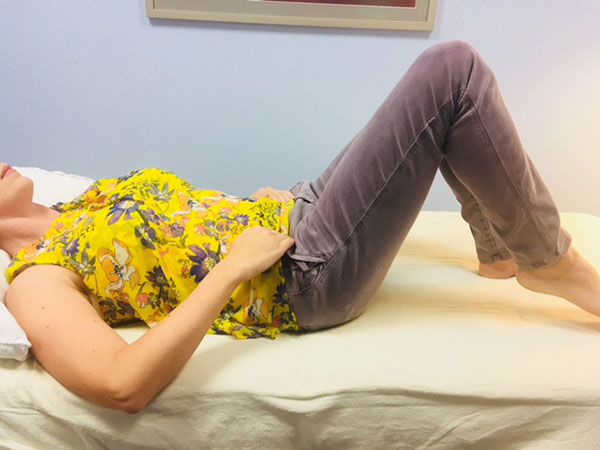
If you have a diastasis recti abdominis (DRA) postpartum, you will have difficulty generating tension in the abdominal wall and challenges managing pressures (intra-thoracic and intra-abdominal pressures). Read this post on diastasis recti abdominis to learn more about what DRA is and exercises to help get you back on track.
Your body goes through a lot during a pregnancy, delivery, and fourth trimester (postpartum). You’ll experience musculoskeletal changes that can be exacerbated by sleep deprivation and hormonal shifts. However, there are several warm-ups and yoga postures that can be helpful in addressing these changes.
Where do you start when getting movement back into your body after you’ve had a baby?
Breathe mindfully
Taking long, deep diaphragmatic breaths supports the nervous system and helps optimize core stability and pelvic floor muscle tone.
When you allow your belly to expand as you inhale, you receive gentle movement into the abdomen. The slow mindful breathing stimulates the parasympathetic nervous system and promotes a calming “rest and digest” response.
Be careful not to stick your belly out forcefully to get a deep breath. Think of allowing the belly to slowly fill like a balloon. We want a full, slow and gentle breath, rather than a pushed breath because a forced breath will create too much pressure and could contribute to DRA and prolapse.
Working with the breath benefits the musculoskeletal system, specifically the relationship between the diaphragm and the pelvic floor. As you inhale, the pelvic floor and diaphragm descend towards your feet. On the exhale, the pelvic floor and diaphragm ascend towards the head.
Dirga (three-part breath)
The Dirga (three-part breath) is very therapeutic for the nervous system, diaphragm and pelvic floor muscles.
- Allowing your belly to start to fill slowly and softly.
- Bring your attention to your rib cage. Notice your ribs expand and widen, like a bucket handle.
- Feel your collarbone floating up towards the ceiling, which you may not need to accentuate if you are a chest breather to begin with.
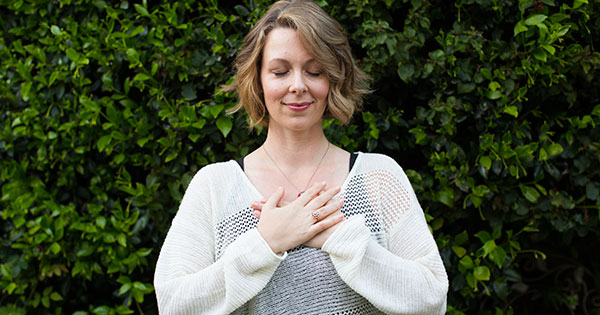
Open your upper body
You know the old song about how all the body parts are connected? “The hip bone is connected to the thigh bone…” – it’s true!
Whatever you can do to open your shoulders and straighten your upper back will improve your breathing and relieve aches caused by caring for your baby.
Try loosening up your neck by tilting your head to the right then turning your chin toward your right shoulder. Continue the movement down toward your sternum and over to the left, creating a half circle. Reverse the circle and repeat if you’d like.
Another quick and easy way to free your breath is to move your shoulders. You can try shoulder blade squeezes or shoulder rolls.
Shoulder blade squeezes: move both shoulders back to open your chest.
You could try:
- holding your shoulder blades back
- clasping your hands behind your back
- pressing your hands down to get a stretch
Shoulder rolls: circle your shoulders forward, up towards your ears, back, and down.
You could try:
- inhale as you bring your shoulders up; sigh out as you bring your shoulders down
- bend the knees as the shoulders come down; straight as the shoulders come up
Laying on your back on a foam roller is a beautiful way to open your chest.
Strengthen your core
After your medical provider offers clearance, perhaps around day two, start to find your transverse abdominals (TA) again.
This can be challenging because your abdominal muscles have been lengthened and your abdomen will feel very strange. Your TA is the deepest layer of abdominal muscle and acts like a corset to the front of your abdomen, creating stability for your spine.
Inhale to prepare, then exhale and imagine bringing your ASIS (anterior superior iliac spine or hip points) together. This is one example of a visual cue and not all cues work for each person. Here are a list of cues to try.
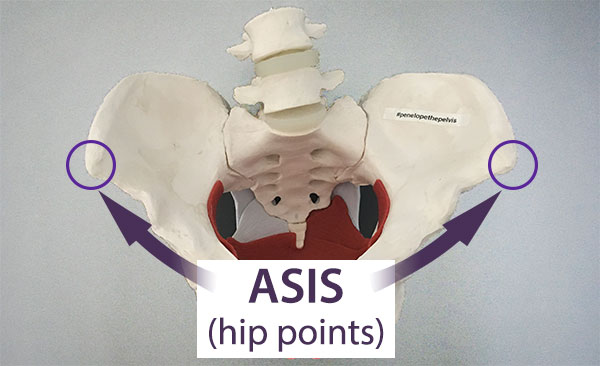
Imagine:
- Zipping up a pair of hip hugger pants that are too tight
- Pulling your lower abdomen toward your spine (without tucking the pelvis)
- Your lower abs are squeezing in like a sponge
Coordinating the pelvic floor muscles
Finding your pelvic floor muscles again can be equally as challenging.
Check out the Breath Cues guide to guide you on what the pelvic floor muscles do during the breath cycle. Inhale, then as you exhale pull your pelvic floor muscles up and in (doing a “Kegel“).
Here are a few cues to try. Imagine:
- Pulling your tailbone towards your pubic bone
- Pulling your tailbone up towards your belly button
- Lifting a lentil with the labia
- Stopping the flow of urine
- Stopping the flow of gas
You might have noticed that if you engaged the transverse abdominals your pelvic floor muscles also activated, or vice versa. This is exactly what we want to happen!
Sometimes, postpartum, we will start training one muscle group in isolation, one at a time. The next goal would be to engage both the pelvic floor and the transverse abdominals at the same time, without breath holding. Even more challenging will be zipping up with pelvic floor and abdomen during movements like picking up your baby, rolling in bed, and lifting groceries. Read more about how to do kegels in this blog.
Get your spine moving
Moving your spine can feel so good, especially moving into flexion at the lower part of the spine. It might take some practice to be able to move vertebra by vertebra as you regain the neuromuscular control at this part of your body.
Try Cat and Cow Poses:
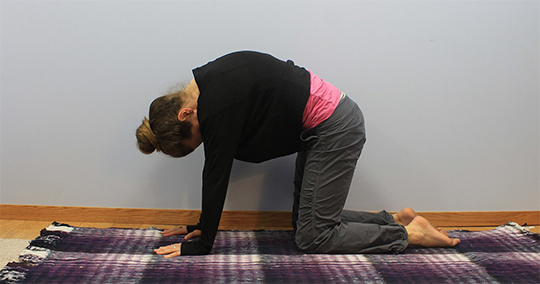
Cat pose
When we move into Cat Pose we go into spinal flexion (curling the spine). Visualize the tailbone reaching towards the head as we create a C curve. Try Cat Pose as you exhale.
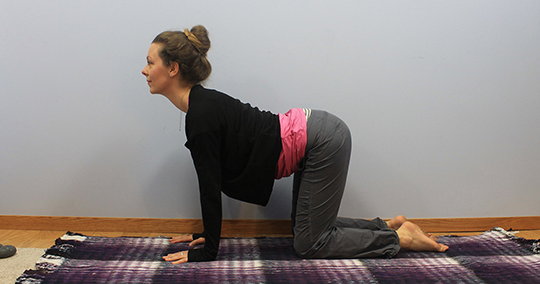
Cow pose
When we move into Cow Pose we go into spinal extension (arching the back). Visualize the tailbone reaching towards the ceiling. You could also imagine the sitz bones separate away from each other. Try Cow pose as you inhale.
If you have had a C-section, be sure to follow your doctor’s instructions and not pull on your incision. For example, if you are releasing into Cow Pose and you feel your stitches pulling, this is too far into the pose.
After you have full clearance for lengthening the scar, you might play around with exploring deeper into the posture.
Restore
Try and keep your body as limber as possible. This is really tricky between sleep deprivation and the static holding positions you find yourself in. You might find restorative yoga postures to be helpful when you are too tired to move.
Supine Twist is a gentle rotation posture and chest opener. You can grade the amount of rotation by adding a bolster or pillow under your knees to get the appropriate amount of stretch for your body.
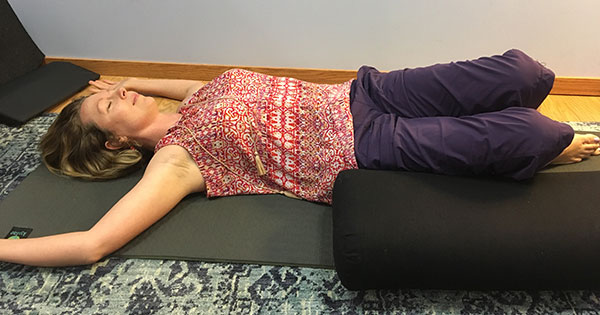
- Lay on your back with your knees bent and feet flat.
- Inhale, and bring your knees to the left.
- Exhale, bring your knees back to center on the inhale.
- Repeat bringing your knees to the right.
Stand strong
During pregnancy, the proprioceptors that tell you where your body is in space adjust as your center of gravity changes. After pregnancy, these receptors need to be retrained. You need to specifically cue yourself to bring your rib cage over your pelvis again to retrain where vertical optimal posture is. You can practice this in Mountain Pose.
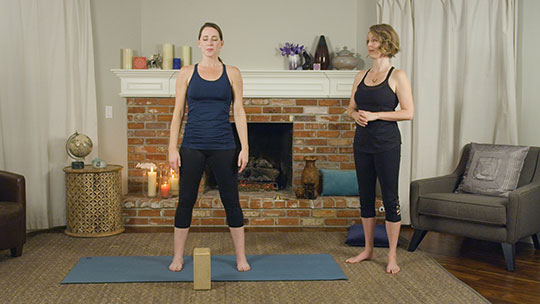
Warrior 1 helps you lengthen the front line of your hip, leg, and abdomen when you are ready for it. You can grade the amount of stretch you get by having your legs closer together.
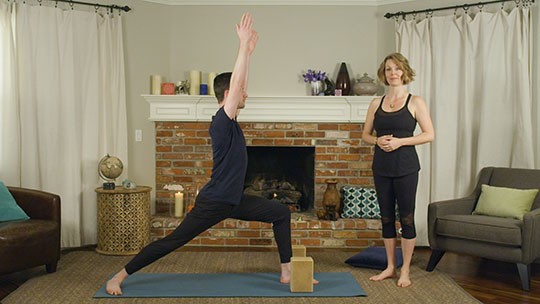
Warrior 2 allows for strengthening, grounding and lengthening of the inner thigh. Again, you can alter the leg separation distance to make it feel best for you.
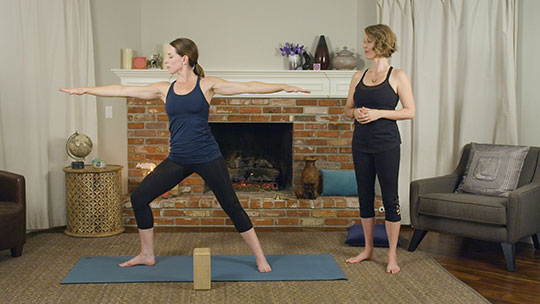
Always listen to your body. Avoid moving in painful ways. Less is more in the healing phase. Be kind and gentle to your body just like you care for your newborn.
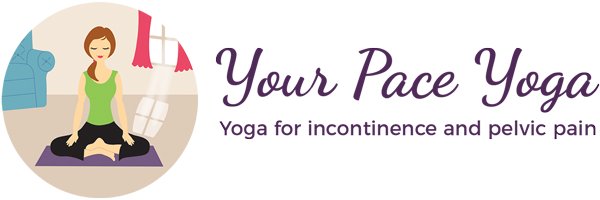

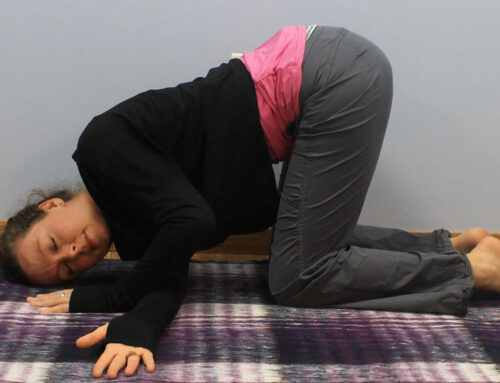
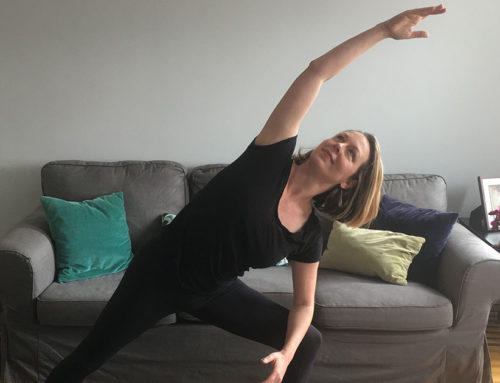
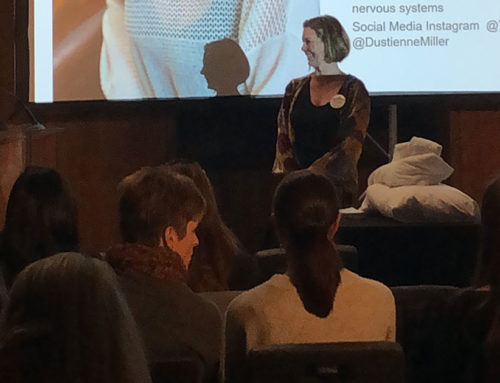
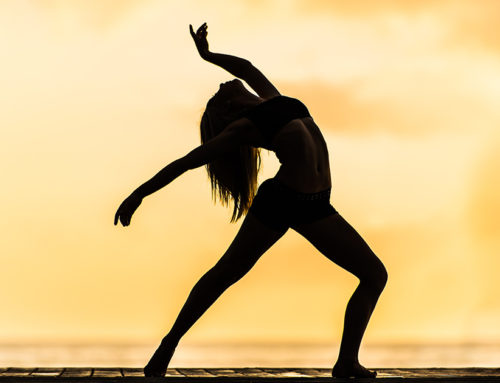
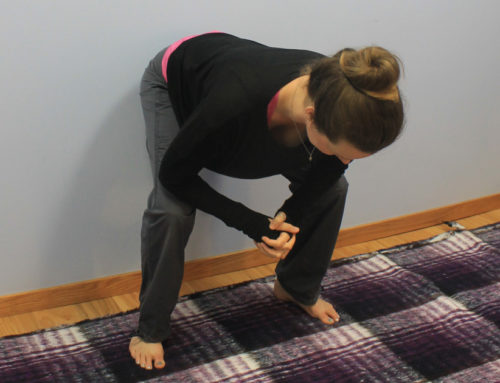
Another win by Dustienne 👏👏👏. Excellent fourth trimester advice. I would still
strongly advise working with a Physical Therapist well versed in Women’s Health, as the subtleties of this kind of exercise are important. Performing them wrongly can have the opposite intended effect.
I would also correct that “only grapefruits or other fruits are sectioned”. Women give birth, be it a vaginal or a cesarean birth. So the vocabulary is “cesarean birth” and NOT “cesarean section”
Can’t agree more Marilyn! Working with a pelvic trained women’s health therapist is super key postpartum, which of course we both are!
Also agree that more correct terminology is cesarean birth, but I chose to use the colloquial term…at least ACOG puts it in parenthesis 🙂 I never thought about the grapefruit analogy! That’s great!